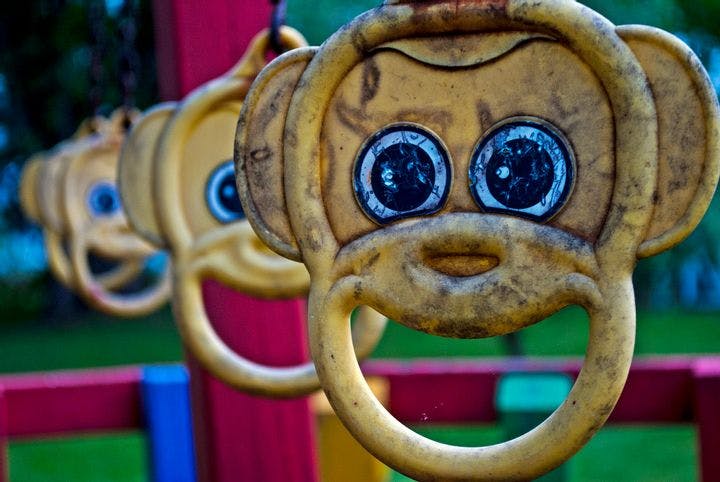How poverty stunts a growing brain
– Erin Amato
If poverty literally changes the structure of the brain, how can impoverished kids ever catch up to their peers?
In 2013, President Obama placed the issue of nationwide pre-kindergarten programs formally on the agenda when he proposed to fund them through a new cigarette tax. While the plan fell short due to lack of support, New York’s new mayor, Bill de Blasio, revived his plan.
New York’s focus on early education is a step in the right direction, writes Jeff Madrick, an expert with the Century Foundation. However, current research suggests educational disparities based on socio-economic status begin even earlier in a child’s development.
Accessibility of America's early-education services pales in comparison to most of Europe, where universal pre-kindergarten programs are commonplace. “Head Start, the main federal program, provides preschool funding for only about two-fifths of poor children” in the three- and four-year-old age group, Madrick writes. The United States has the second-highest rate of child poverty of all 35 countries measured by the United Nations Children’s Fund. Twenty-three percent of American children under age five live in deep poverty. The racial disparities of child poverty are egregious, with black and Latino children much more likely to live in poverty.
The U.S. has the 2nd highest rate of childhood poverty of all 35 countries measured by the UN Children’s Fund
A childhood below the poverty line does not bode well for the future: impoverished children are more likely to suffer from asthma, attention deficit disorder, and low academic performance. Teenage pregnancy exacerbates the challenges of struggling girls; few end up graduating from high school.
While others have attributed such outcomes to cultural or genetic factors, Dr. David Keller, president of the Academic Pediatric Association, proposes a new, more intractable cause: a highly stressful environment for young children can actually affect the architecture of the brain, “changing the actual neurological functioning and the quality of brain matter.” Despite evidence from literally hundreds of studies agreeing with Dr. Keller’s assertions, little national attention has been paid to the study of childhood brain functioning.
It should then come as little surprise that pre-K is not enough to remedy childhood development deficits. Madrick cites a Washington University study which found that poor children nurtured adequately usually have normally developed brain tissue, while those with less nurturing, more stressful environments show less white and grey matter and smaller control centers (such as the hippocampus).
Constant stress due to malnutrition, domestic violence, and parental drug abuse bombard the child’s developing brain, causing excessive hormonal activity of adrenaline and cortisol. This “toxic stress” damages “neural connections, undermines immune responses, and changes the parts of the brain that directly affect memory, learning, and emotional control,” according to Dr. Jack P. Shonkoff, who runs Harvard’s Center on the Developing Child.
Sociological research complements the findings of neurological research: common child neglect among the poor indicates family instability and parental worry over providing adequate nutrition for children. While some mothers may be irresponsible or under the influence of drugs, the Children’s Defense Fund notes that the majority of poor mothers care just as much about their children as higher-income parents. Rather, many of these issues stem from economic realities: women in poverty have less freedom to set working hours when they are employed, can’t afford childcare, and must balance long working hours with the demands of parental life.
The quality of prenatal care and the mother’s health also alter the brain’s architecture; a woman with depression or drug addiction may deliver a child with stunted neurological growth. Children in poverty can benefit from medical interventions and parental counseling: even small changes, like reading to a toddler before language skill development, can improve cognitive functioning.
What policies can best help a child’s developing brain? Madrick calls attention to the slow progress of legislators to recognize the connection between poverty, nurturing, and development. When it comes to early education, why should American children lag so far behind their European counterparts? Madrick supports a “substantial financial stimulus” to increase employment, especially among low-income workers, in addition to improvement of social programs so crucial to Europe’s progress. “In other words, the War on Poverty begun in the 1960s worked,” Madrick claims. These Great Society-era social net programs remain an essential lifeline for many Americans. According to research by Robert Greenstein of the Center for Budget and Policy Priorities, programs like Food Stamps, the Earned Income Tax Credit, and the Child Tax Credit, protected 41 million Americans — including 9 million children — from poverty in 2012.
Madrick is disturbed by the high poverty rate in the under-five age group, exacerbated by the recession and unchanged by the recent recovery. If asked how to solve the problem, he would “begin a new war on child poverty by developing a federal system of cash allowance to poor families with children, as so much of the world now does.” Such policies would likely be stalled in a partisan Congress (Madrick notes that some congressmen even support reducing food stamp allowances). America’s children are slated for a life of poverty if policymakers believe children can just “study harder and find jobs when they grow up.”
Inequality begins at birth. Policymakers must consider the unambiguous findings of 21st century neuroscience and pay attention to the 25 percent of young children living around the poverty line. America must prioritize a fair and just educational system, regardless of race or ethnicity, for its tiniest future constituents.
The Source: “Inequality Begins at Birth” by Jeff Madrick, The New York Review of Books, June 26, 2014.
Photo courtesy of Flickr/KeefersImages
